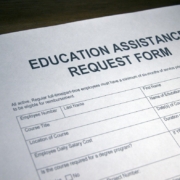CHANGES IN CIRCUMSTANCES CAN AFFECT YOUR PREMIUM ASSISTANCE CREDIT
On December 22, 2017, The Tax Cuts and Jobs Act was signed into law. The information in this article predates the tax reform legislation and may not apply to tax returns starting in the 2018 tax year. You may wish to speak to your tax advisor about the latest tax law. This publication is provided for your convenience and does not constitute legal advice. This publication is protected by copyright.
Article Highlights:
- Premium assistance credit based on actual family income and size.
- Overestimated assistance may have to be paid back.
- How family size is determined.
- How family income is determined.
If you are signed up for health insurance through a health insurance marketplace, you may have qualified for the premium assistance tax credit. This credit provides financial assistance to help you pay for your health insurance premiums. Individuals and families that qualify for the credit are given the choice to receive the credit in advance to reduce the insurance premiums during the year, or they can pay the full insurance premiums and get the credit when they file their tax return next year.
If you chose to take the advance credit (premium subsidy), you should be aware that the credit on which the subsidy is based was determined using estimated household income and family size for the year.
If your estimated household income and family size are different from the actual amounts reported when you file your 2014 return next year, the following will happen:
- Overstated Income and Family Size: If your household income and family size was overestimated and you received premium subsidies based on an advanced credit that was less than you were entitled to, you will receive credit for the difference on your 2014 tax return.
- Understated Income and Family Size: If your household income or family size was underestimated and you received premium subsidies based on an advanced credit that was more than you were entitled to, you will have to pay back some or all of the difference on your 2014 tax return.
A taxpayer’s family size is the number of individuals for whom the taxpayer is allowed an exemption deduction for the tax year. For example, if you are married and filing jointly with two dependent children, your family size would be four.
The term “household income” includes the modified adjusted gross income (MAGI) of the taxpayer plus the sum of MAGIs of all individuals taken into account when determining the taxpayer’s family size and who had to file a tax return. MAGI is generally the same as your income unless you have certain adjustments. For example, say you are filing jointly with your spouse and only you work and make $40,000 per year. You also claim your two children as dependents and one of them has a part-time job and made $9,000 for the year. You have no adjustments to your income, so your household income would be $49,000 ($40,000 + $9,000). Your child’s income is included in your household income because making $9,000 would have required the child to file a tax return.
If you had not included your child’s income in your projected household income, the advance credit, and the corresponding premium subsidy would be more than you were entitled to and you may have to pay part of it back.
That is why, if you decided to get the credit in advance, it’s important to report any changes in your income or family size to the marketplace throughout the year. Reporting these changes will help you get the proper type and amount of financial assistance so you can avoid getting too much or too little in advance.
If you have questions related to the premium assistance credit, please give this office a call.








Leave a Reply
Want to join the discussion?Feel free to contribute!